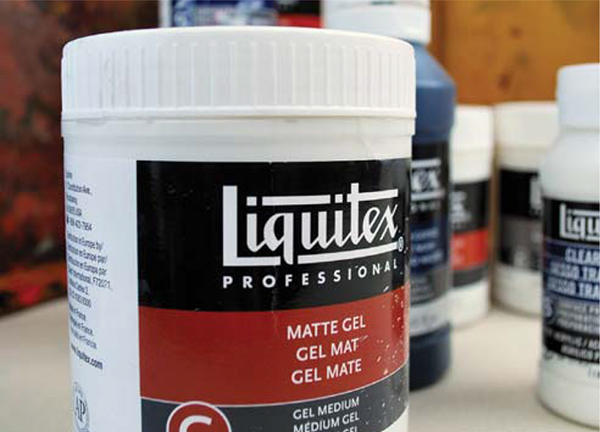
Below is a list of basic tools and materials I use throughout the book, and which you will use well beyond. I will delve into each of them in upcoming chapters.

I used a variety of acrylic gels and primers in my samples throughout the book: Liquitex Gel Medium, Natural Sand, and Glass Beads, as well as white, black and clear gesso. Their properties will be discussed further in chapter 3.

Acrylic paints are my favorite art medium because of their versatility. I love that they come in different viscosities (thin, soft, fluid, heavy). They dry quickly, are permanent, can be used with different mediums and are easy to clean up. For the projects in this book, I used mostly artist-grade soft body or fluid acrylic paints.
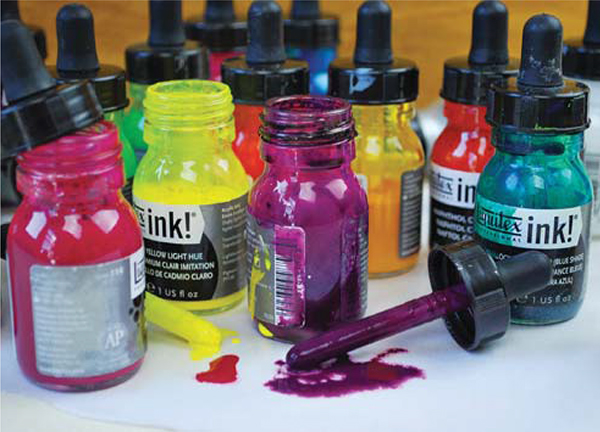
Acrylic inks are fluid acrylic-based paints with extra-fine pigments and are permanent when dry. They give a watercolor-like effect and can be used in many different ways in your mixed-media projects, including painting, staining raw canvas, fabric painting and photo tinting, to name just a few.
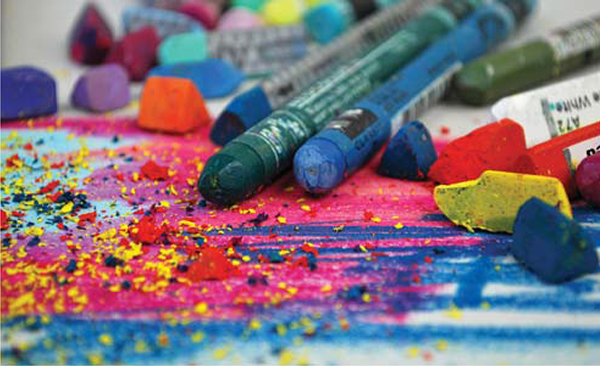
Derwent Artbars and Caran d’Ache Neocolor II are wax-based pigmented sticks that are water-soluble. They are creamy in consistency; the colors are very intense. Both can be used for paint applications or mark-making and texture.
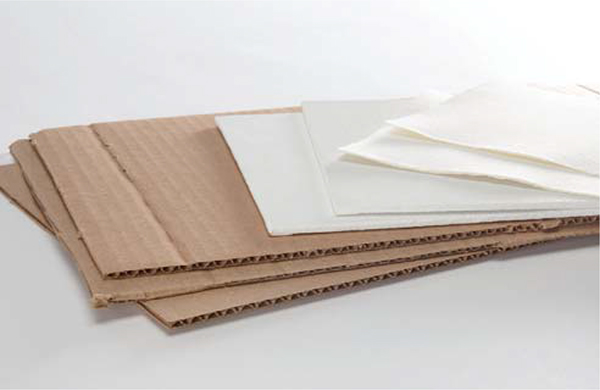
Art journaling has become an art form in and of itself for me. An art journal is also a great starting point to try out new supplies and techniques. I talk about various art journal options and ways to use them in chapter 6.
For many of the samples throughout the book, I used purchased canvas boards measuring 6" × 6" (15cm × 15cm) or 8" × 8" (20cm × 20cm). Canvas boards are an economical substitute to stretched canvases. Cotton duck is mounted to a thin board, which usually comes pre-primed with gesso.
I really like painting on corrugated cardboard. I cut pieces from shipping boxes, then seal them with gel medium or prime them with gesso. The rough texture and Kraft brown color provide interest.
Hemptique Handmade Hemp Paper is made of hemp, linen and cotton. It has a wonderful texture and is pliable like fabric. It can be used for watercolor applications, writing and drawing, pastel and charcoal, and inkjet printing.
Stretched canvas is cotton or linen fabric that has been primed and stretched around a wooden frame.
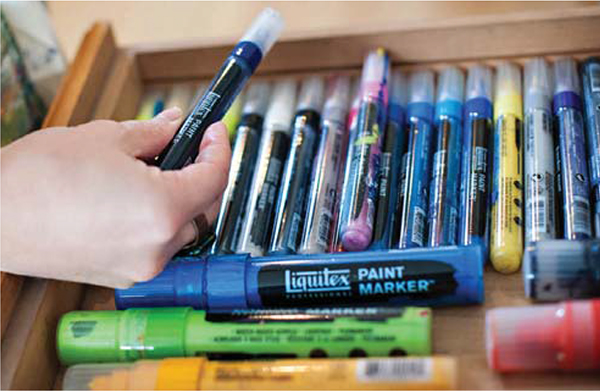
Acrylic markers are some of the most-used writing and drawing tools in my mixed media work. Liquitex Professional Paint Markers are my go-to markers for their pump system and the different sizes and nibs available. They’re also a great way to travel with acrylic paint.
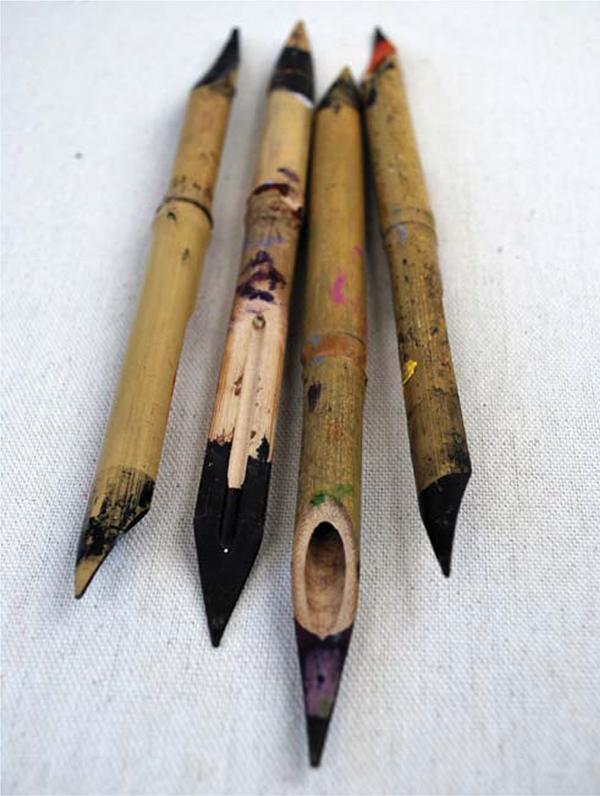
These pens are carved from bamboo shafts and can be used with liquid ink. They’re great as writing tools or for easy drawing applications.

These are my favorite art journaling and sketching pens because they work beautifully over nontextured, acrylic-painted surfaces. They’re fine-line paint pens filled with permanent, opaque, water-based paints. They can also be used for interesting wet effects before they dry.
In addition to the standard no. 2 (HB) pencil, I love to use the softer 4B pencil for mark-making into wet and/or dried paint.
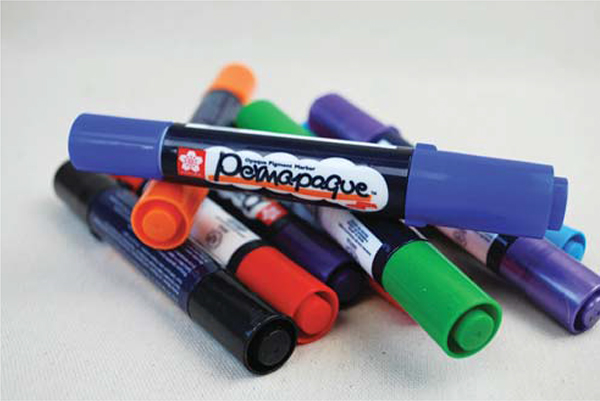
These odorless opaque pigment markers are permanent and have a chisel tip for broad marks at one end and a bullet nib for fine lines at the other end. They’re great markers to use on surfaces like acetate, metal and glass (but they’re not permanent without sealer on nonporous surfaces).
For the transfer technique used in this book, I have found the Chartpak AD Marker Colorless Blender pen works best. Only blender pens with xylene will work for this technique because they’re solvent based. When working with these pens, you must follow the manufacturer’s instructions: Work in a well-ventilated area and be careful that the solution does not come in contact with your skin or eyes.
Paintbrushes are one of my magic tools for painting, applying mediums and making marks. They come in many shapes and sizes. Here are the eight acrylic paintbrushes I pick up again and again for my artwork, and the sizes I prefer:
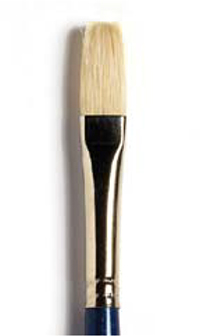
Flat brushes have a square end and medium-long bristles. They hold a lot of paint. I use them for bold, even strokes, to fill in large areas and backgrounds, and for impasto. The side edges of a flat brush can be used to paint fine lines and straight-edged lines.
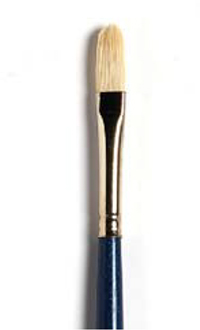
Filbert brushes have a flat and cat-tongued form with medium-long bristles. When used on the side, they create thin lines; when used flat, they create broad brushstrokes. I use them to blend areas together or create soft, rounded edges.

Round brushes have a rounded tip and are perfect for detail work. They work best with thinner-bodied paints for filling in small areas and are great for blending.
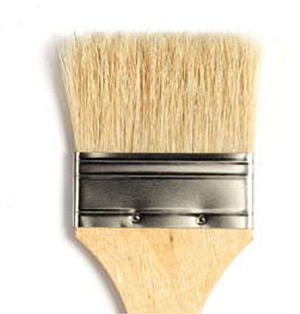
My favorite paddle brush has a long-bristled flat tip and is the perfect tool for big surfaces and even application of paint and mediums, as well as for washes.

Fan brushes have a spread-bristled flat tip. They’re wonderful for blending and feathering, as well as for many textural painting effects. I use them for collaging because the fanned-out bristles allow me to push adhesive or mediums underneath the edges of collage material to make sure it is spread evenly but thinly.
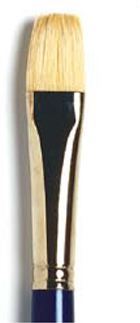
Bright brushes are short-bristled and flat with inward curving edges. I use them mostly on canvases with heavy color, as they are good for controlled strokes. The flat part can be used for thick lines, while the round sides can be used for thin line applications.
Grafix Dura-Lar Sheets are my go-to transparency sheets for printing and other wet media. They come in different sizes and thicknesses. I prefer the 81⁄2" × 11" (22cm × 28cm) size and always use the .005" (1mm) thickness for cutting stencils and masks.
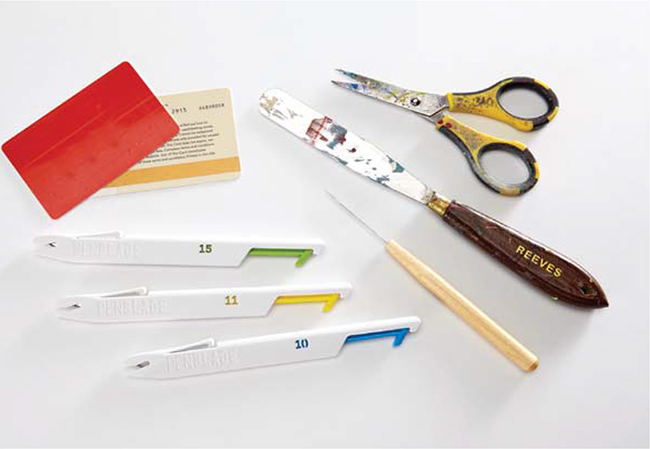
I use a PenBlade safety scalpel with a retractable blade. Keep replacement blades on hand. Mixed-media materials wear blades out more quickly than simply cutting paper.
Old hotel key cards or gift cards with no remaining value can be used as palette knives. They can also be cut and used as tools to create decorative marks or textures.
Palette knives are not only great tools to scoop out or mix paints, but also to apply paint and create texture.
Small Teflon-covered scissors work best.
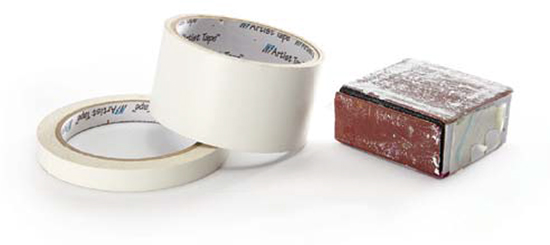
Assorted tapes are a must. I keep tapes on hand that are low-tack, double-sided, temporary and permanent.
I keep sanding blocks and sandpaper sheets on hand in a variety of grits ranging from fine to coarse.
This can be direct mail, maps, tissue paper, fabric scraps, ribbon and buttons. See chapter 5 for more about collage materials.
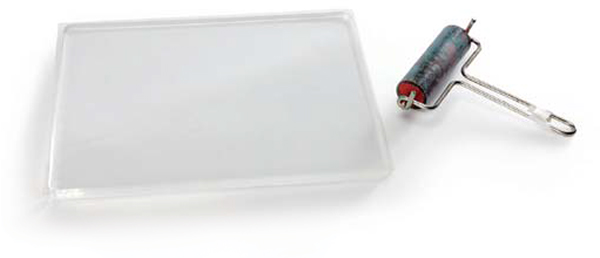
The monoprinting plate can be a glass, acrylic or gel plate. My favorite monoprinting plate is the Gelli Arts Gel Plate. I talk in detail about monoprinting and the supplies needed in chapter 4.
Pick an awl or paper-piercing tool that feels comfortable in your hand. They are available with short, round handles as well as long, thin ones.
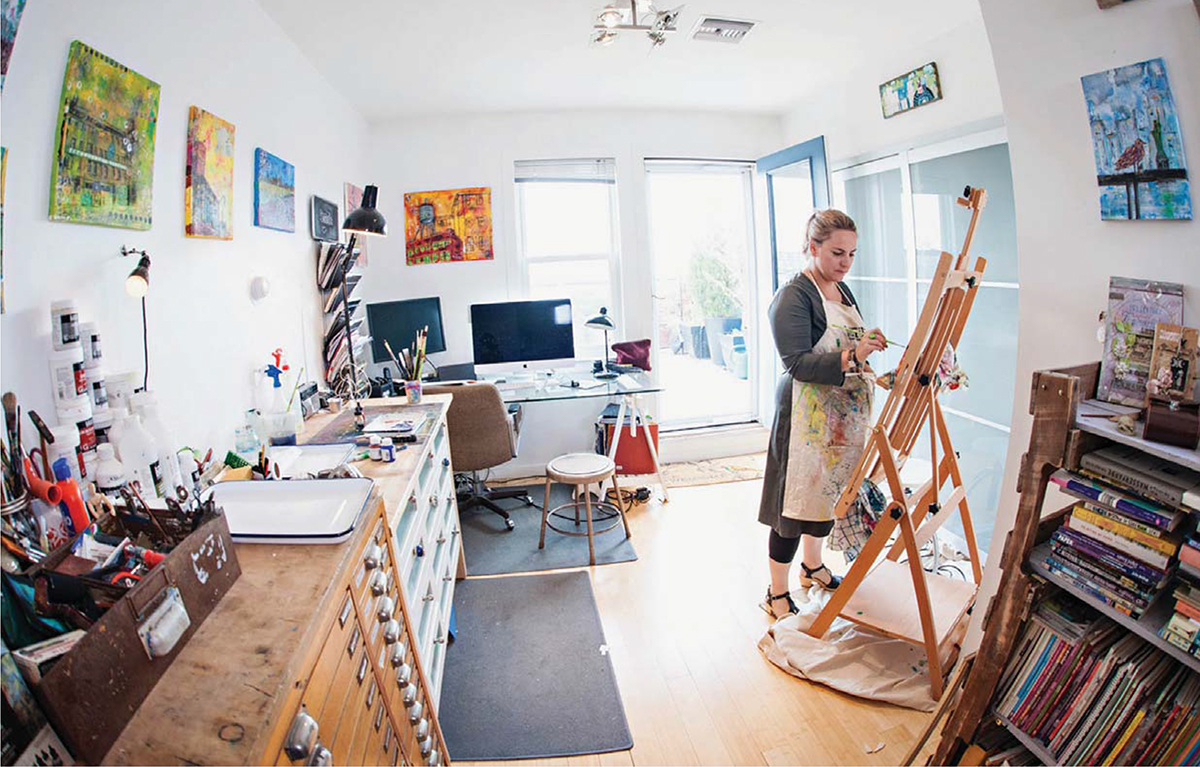
Nathalie in her studio
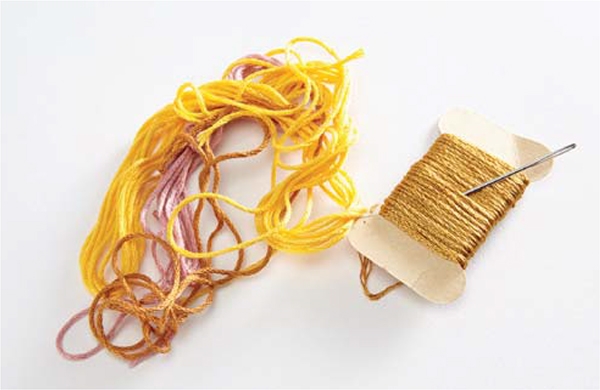
Embroidery thread comes in hundreds of colors. It’s available in cotton, silk and wool, and is often multi-stranded. I choose my palette the same way I choose paints: What I like best finds its way into my studio.
Tapestry needles have a long eye and are easy to thread with multiple strands of embroidery floss. The point is blunt, which means that holes need to be pre-pierced with an awl or piercing tool for most mixed-media projects.
Sold by the sheet and/or roll, translucent deli and waxed paper, as well as the slightly heavier parchment paper, have many uses. I keep all three in my studio.
Some of the techniques in this book require access to a printer or copy machine. Depending on the technique, a laser or inkjet print or a photocopy may be required.
Matte or gloss photo paper and lightweight copier or computer printing paper can be used in mixed media. What I use for each project is described in the instructions.